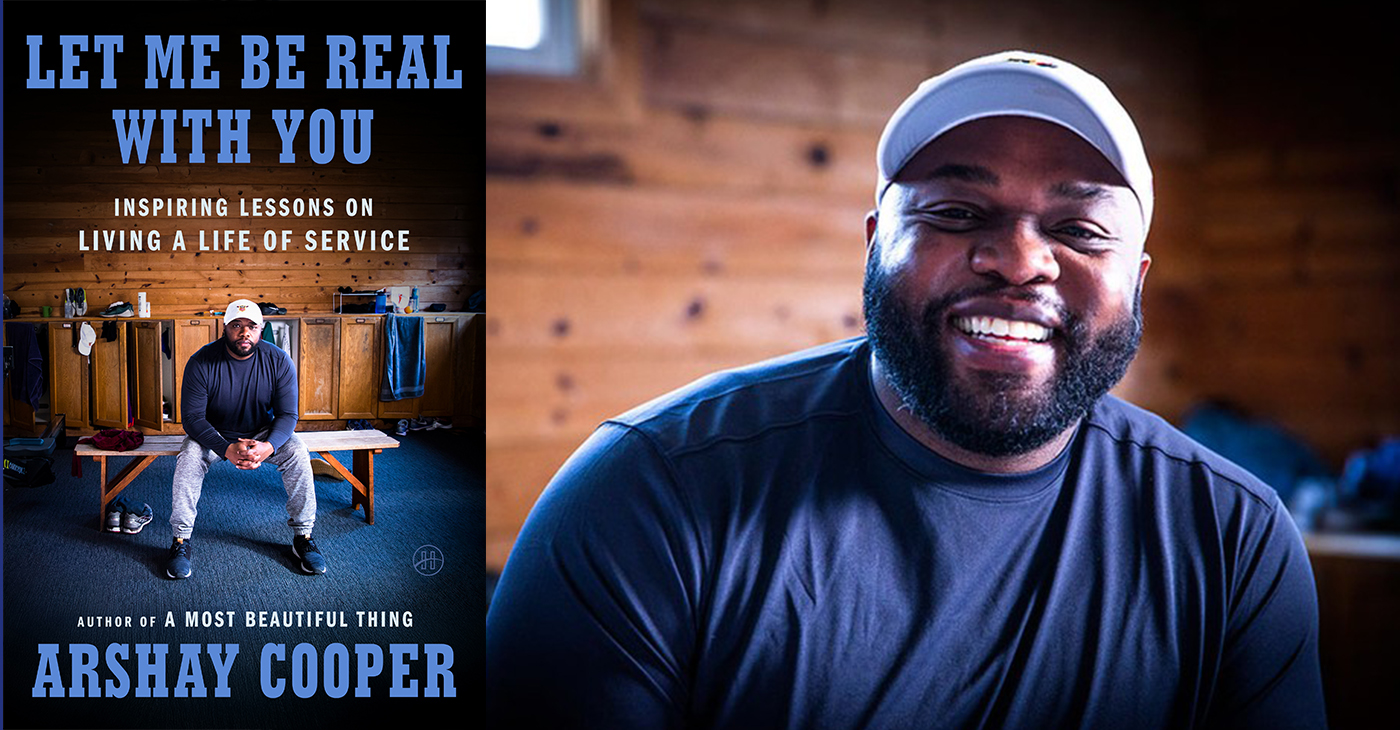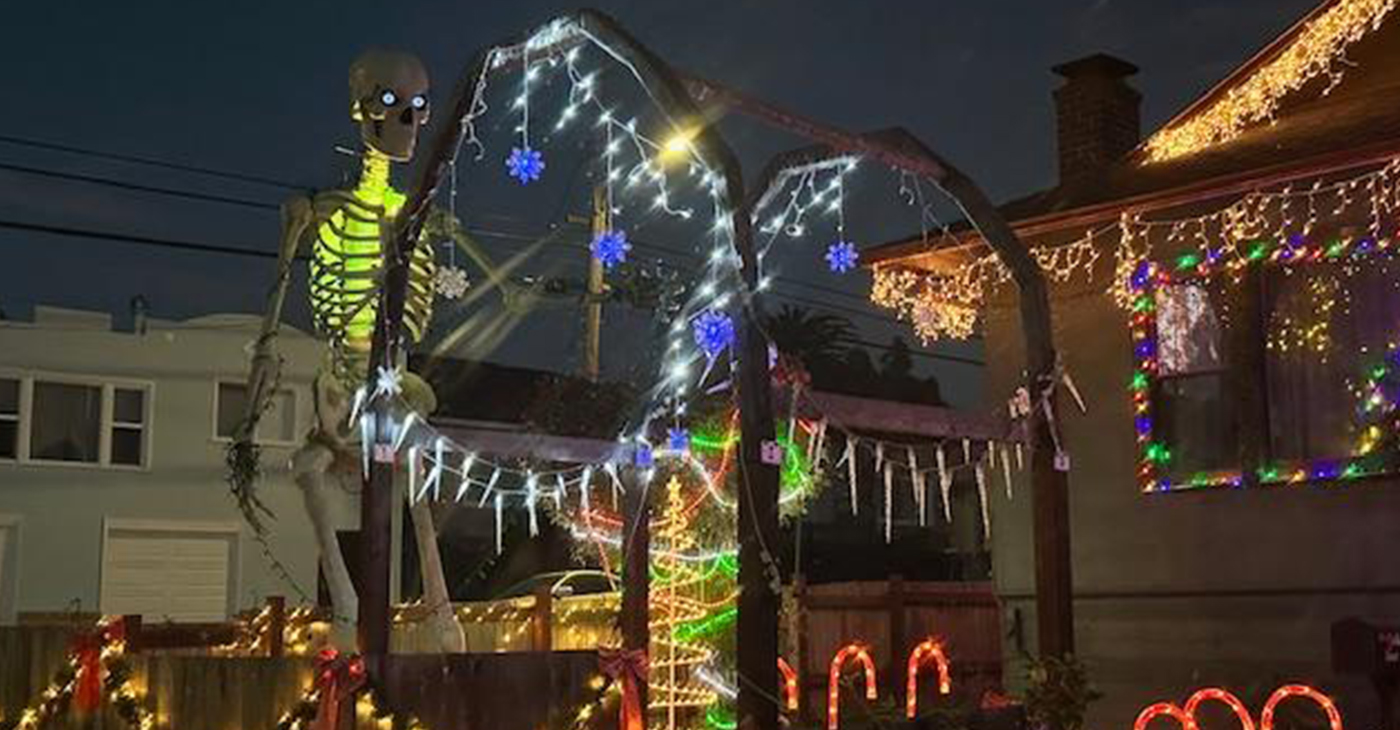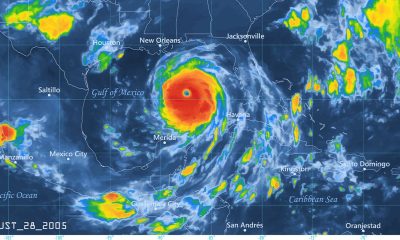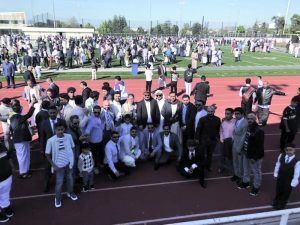Arts and Culture
Black Girl Magic: Misty Copeland Inspires Bay Area Black Ballerina Angela Watson

Trailblazer Ballerina Misty Copeland Inspires Black Ballerina Angela Watson who performs as “Clara” and “Dragonfly” in the 2017 San Francisco Nutcracker Ballet.
Humble and graceful, Misty Copeland took the stage at the Nourse Theater for a fireside chat with Laurene Powell Jobs on Monday, December 18. A brief video shared the event’s purpose – a benefit for the Gugulethu Ballet Project, an organization that brings the art of classical ballet to the youth of South African townships.
The sold-out event featured an insightful Copeland who candidly spoke of growing up awkward, underprivileged, quiet and unsure of where to fit in. During the 90-minute talk, Copeland shared her swan dive into the world of ballet only to emerge as the first African-American principal ballerina at the prestigious American Ballet Theatre (ABT).
The heartfelt discussion was a delight and pure inspiration for anyone, especially young ballerinas. Born Misty Danielle Copeland September 10, 1982 in Missouri, she was raised with four siblings in San Pedro, California. Through the Boys and Girls Club she was exposed to ballet at 13, which is late for most. However, Copeland was just getting a taste of her true destiny becoming a child prodigy just two years later. To everyone’s amazement, Copeland’s physique and determinate enabled her to accomplish in months what most dancers require years to master, and by the tender age of 15 she was an award- winning starlet.
Fast forward to today and Copeland is an American ballet dancer for ABT, one of only three leading classical ballet companies in the United States. On June 30, 2015, Copeland became the first African American woman to be promoted to principal dancer in ABT’s 75-year history.
In 1997, Copeland won the Los Angeles Music Center Spotlight Award as the best dancer in Southern California. After two summer workshops with ABT, she became a member of ABT’s Studio Company in 2000 and its corps de ballet in 2001, and became an ABT soloist in 2007. As a soloist from 2007 to mid-2015, she continued to perfect her technique.
During the talk, Copeland recanted the coveted opportunity to perform Firebird, a milestone in her career and again being the very first Black woman in the role.
The outpouring of African American support was enormous. Copeland, well aware of the magnitude for all black ballerinas and the community graciously accepted the role of unicorn, being the first, the trailblazer, the one paving the path of color in ballet. “I remember my colleagues asking me if they were my family members.” Copeland was able to power through opening night, but she was soon faced reality; a severe injury – 6 stress fractures to her tibia, requiring a plate to be screwed in and a year of rehabilitation. Copeland came back even more powerful and at 35, she says she’s not just yet ready to retire her pointe shoes.
Copeland was named in 2015 as one of the 100 most influential people in the world by Time magazine, appearing on its cover. She performed on Broadway in On the Town, toured as a featured dancer for Prince and appeared on the reality television shows A Day in the Life and So You Think You Can Dance.
Copeland said it was an honor to work with Prince and that the tour exposed many to ballet for the first time. “Touring and appearing in Prince’s video was an honor. Prince was supportive, and always told me that it was ok to be different.
As a sought after speaker, Copeland takes honor in giving back to the next generation of dancers as a mentor. Prior to the talk, Misty met with young Black ballerina, Angela Watson, who stars as “Clara” in the San Francisco Ballet production of the Nutcracker. Watson, a 4.0 student at the Oakland School for the Arts was excited to meet her inspiration.
During the Black girl magic moment, Watson took photos with Copeland and received an autographed copy of her latest book “Ballerina Body.” The day also marked the 125th anniversary of the world premiere of the Nutcracker in St. Petersburg, Russia where it all began.
“I was so excited to meet her,” said Watson, a sixth level student at the San Francisco Ballet Company. “She has achieved something I have been working hard to achieve. When I first read about her I was inspired to work harder.” Watson has been featured in the media and her style and physique at her age are comparable to her muse.
Watson, began her training in classical ballet, at age 11, at Oakland School for the Arts (“OSA”) School of Dance under Reginald Ray Savage, Artistic Director and Principal Choreographer. After training in technique for the first half of the 2014-2015 school year, Watson was authorized to throw her ballet slippers into the National Ballet Tours of 2016 arena. She came out a winner, receiving 7 Summer Intensive training offers of 7 auditions with the most prominent ballet schools in America; American Ballet Theatre, Alvin Ailey American Dance, Boston Ballet, Joffrey Chicago, Joffrey NYC, School of American Ballet, and San Francisco Ballet School. She was also awarded 3 merit-based scholarships.
Watson chose the 2016 Summer Intensive program at S.F. Ballet School and after training with SFBS for 3 weeks, Watson was invited to join its 2016-2017-year round training program in recognition of her potential to achieve a professional career in ballet. Within weeks, Watson was selected as one of the few ever African-American ballerinas to dance the leading character role of Clara in the 74-year-old first full length American Nutcracker for SF Ballet Company’s 2016 holiday season where she danced into the hearts of little and big hopeful ballerinas across the Oakland/San Francisco Bay Area.
While Watson enjoyed attending a second Summer Intensive with SFB, she has been appointed to the elevated Girls Level 6 on scholarship for 2017-2018 year round.
After receiving an outstanding 9 Summer Intensive 2017 training offers, Watson will now dance her way East to New York City attending the Russian American Federations Bolshoi Ballet Academy. On a merit-based scholarship, supported by U.S. Dept. of Education and the Youth America Grand Prix, Watson will now enter the ballet world’s version of the Olympics, where she will also learn to speak Russian.
Through the holiday season, Watson performs the Nutcracker at the War Memorial Opera House as “Clara” December 20th and 23rd at 7:00 p.m. and as Dragonfly, December 22, 2:00 p.m. and 7:00 p.m. Next week she performs as Clara December 27 at 2:00 p.m. and December 29 at 2:00 p.m. and 7:00 p.m. Dragonfly performances are Christmas Eve at 11:00 a.m.; December 28, 2:00 p.m. and 7:00 p.m. and a final performance December 30 at 11: 00 a.m. and 4:00 p.m. Along with Angela, follow three other OSA students, Daniil Shaposhnikov (Mouse), Pilar Ortega(Dragonfly) and Angelina Williams (Dragonfly) from Oakland School for the Arts’ School of Dance to the 2017 San Francisco Nutcracker Ballet’s Land of Dreams. For more information visit www.sfballet.org
Captions
Angela Watson, an Oakland School for the Arts ballerina, proudly shares an autographed copy of Misty Copeland’s latest book “Ballerina Body”
Advice
BOOK REVIEW: Let Me Be Real With You
At first look, this book might seem like just any other self-help offering. It’s inspirational for casual reader and business reader, both, just like most books in this genre. Dig a little deeper, though, and you’ll spot what makes “Let Me Be Real With You” stand out.

By Terri Schlichenmeyer
Author: Arshay Cooper, Copyright: c.2025, Publisher: HarperOne, SRP: $26.00, Page Count: 40 Pages
The hole you’re in is a deep one.
You can see the clouds above, and they look like a storm; you sense the wind, and it’s cold. It’s dark down there, and lonesome, too. You feel like you were born there — but how do you get out of the deep hole you’re in? You read the new book “Let Me Be Real With You” by Arshay Cooper. You find a hand-up and bring someone with you.
In the months after his first book was published, Cooper received a lot of requests to speak to youth about his life growing up on the West Side of Chicago, his struggles, and his many accomplishments. He was poor, bullied, and belittled, but he knew that if he could escape those things, he would succeed. He focused on doing what was best, and right. He looked for mentors and strove to understand when opportunities presented themselves.
Still, his early life left him with trauma. Here, he shows how it’s overcome-able.
We must always have hope, Cooper says, but hope is “merely the catalyst for action. The hope we receive must transform into the hope we give.”
Learn to tell your own story, as honestly as you know it. Be open to suggestions, and don’t dismiss them without great thought. Know that masculinity doesn’t equal stoicism; we are hard-wired to need other people, and sharing “pain and relatability can dissipate shame and foster empathy in powerful ways.”
Remember that trauma is intergenerational, and it can be passed down from parent to child. Let your mentors see your potential. Get therapy, if you need it; there’s no shame in it, and it will help, if you learn to trust it. Enjoy the outdoors when you can. Learn self-control. Give back to your community. Respect your financial wellness. Embrace your intelligence. Pick your friends and relationships wisely. “Do it afraid.”
And finally, remember that “You were born to soar to great heights and rule the sky.”
You just needed someone to tell you that.
At first look, this book might seem like just any other self-help offering. It’s inspirational for casual reader and business reader, both, just like most books in this genre. Dig a little deeper, though, and you’ll spot what makes “Let Me Be Real With You” stand out.
With a willingness to discuss the struggles he tackled in the past, Cooper writes with a solidly honest voice that’s exceptionally believable, and not one bit dramatic. You won’t find unnecessarily embellished stories or tall tales here, either; Cooper instead uses his real experiences to help readers understand that there are few things that are truly insurmountable. He then explains how one’s past can shape one’s future, and how today’s actions can change the future of the world.
“Let Me Be Real With You” is full of motivation, and instruction that’s do-able for adults and teens. If you need that, or if you’ve vowed to do better this coming year, it might help make you whole.
Alameda County
Bling It On: Holiday Lights Brighten Dark Nights All Around the Bay
On the block where I grew up in the 1960s, it was an unwritten agreement among the owners of those row homes to put up holiday lights: around the front window and door, along the porch banister, etc. Some put the Christmas tree in the window, and you could see it through the open slats of the blinds.

By Wanda Ravernell
I have always liked Christmas lights.
From my desk at my front window, I feel a quiet joy when the lights on the house across the street come on just as night falls.
On the block where I grew up in the 1960s, it was an unwritten agreement among the owners of those row homes to put up holiday lights: around the front window and door, along the porch banister, etc. Some put the Christmas tree in the window, and you could see it through the open slats of the blinds.
My father, the renegade of the block, made no effort with lights, so my mother hung a wreath with two bells in the window. Just enough to let you know someone was at home.
Two doors down was a different story. Mr. King, the overachiever of the block, went all out for Christmas: The tree in the window, the lights along the roof and a Santa on his sleigh on the porch roof.
There are a few ‘Mr. Kings’ in my neighborhood.
In particular is the gentleman down the street. For Halloween, they erected a 10-foot skeleton in the yard, placed ‘shrunken heads’ on fence poles, pumpkins on steps and swooping bat wings from the porch roof. They have not held back for Christmas.
The skeleton stayed up this year, this time swathed in lights, as is every other inch of the house front. It is a light show that rivals the one in the old Wanamaker’s department store in Philadelphia.
I would hate to see their light bill…
As the shortest day of the year approaches, make Mr. King’s spirit happy and get out and see the lights in your own neighborhood, shopping plazas and merchant areas.
Here are some places recommended by 510 Families and Johnny FunCheap.
Oakland
Oakland’s Temple Hill Holiday Lights and Gardens is the place to go for a drive-by or a leisurely stroll for a religious holiday experience. Wear a jacket, because it’s chilly outside the Church of Jesus Christ of Latter-day Saints, at 4220 Lincoln Ave., particularly after dark. The gardens are open all day from 9 a.m. to 9 p.m. with the lights on from dusk until closing.
Alameda
Just across the High Street Bridge from Oakland, you’ll find Christmas Tree Lane in Alameda.
On Thompson Avenue between High Street and Fernside drive, displays range from classic trees and blow-ups to a comedic response to the film “The Nightmare Before Christmas.” Lights turn on at dusk and can be seen through the first week in January.
Berkeley
The Fourth Street business district from University Avenue to Virginia Street in Berkeley comes alive with lights beginning at 5 p.m. through Jan. 1, 2026.
There’s also a display at one house at 928 Arlington St., and, for children, the Tilden Park Carousel Winter Wonderland runs through Jan. 4, 2026. Closed Christmas Day. For more information and tickets, call (510) 559-1004.
Richmond
The Sundar Shadi Holiday Display, featuring a recreation of the town of Bethlehem with life-size figures, is open through Dec. 26 at 7501 Moeser Lane in El Cerrito.
Marin County
In Marin, the go-to spot for ‘oohs and ahhs’ is the Holiday Light Spectacular from 4-9 p.m. through Jan. 4, 2026, at Marin Center Fairgrounds at 10 Ave of the Flags in San Rafael through Jan. 4. Displays dazzle, with lighted walkways and activities almost daily. For more info, go to: www.marincounty.gov/departments/cultural-services/department-sponsored-events/holiday-light-spectacular
The arches at Marin County Civic Center at 3501 Civic Center Dr. will also be illuminated nightly.
San Francisco
Look for light installations in Golden Gate Park, chocolate and cheer at Ghirardelli Square, and downtown, the ice rink in Union Square and the holiday tree in Civic Center Plaza are enchanting spots day and night. For neighborhoods, you can’t beat the streets in Noe Valley, Pacific Heights, and Bernal Heights. For glee and over-the-top glitz there’s the Castro, particularly at 68 Castro Street.
Livermore
The winner of the 2024 Great Light Flight award, Deacon Dave has set up his display with a group of creative volunteers at 352 Hillcrest Avenue since 1982. See it through Jan. 1, 2026. For more info, go to https://www.casadelpomba.com
Fremont
Crippsmas Place is a community of over 90 decorated homes with candy canes passed out nightly through Dec. 31. A tradition since 1967, the event features visits by Mr. and Mrs. Claus on Dec. 18 and Dec. 23 and entertainment by the Tri-M Honor Society at 6 p.m. on Dec. 22. Chrippsmas Place is located on: Cripps Place, Asquith Place, Nicolet Court, Wellington Place, Perkins Street, and the stretch of Nicolet Avenue between Gibraltar Drive and Perkins Street.
Activism
Oakland Mandala: A New Event and Point of Beauty
Led by Oakland resident Mandisa Snodey, a group of artists conceived and painted the mandala on Linden street near McClymonds High School as part of a Black Friday event the day after Thanksgiving to support Black-owned businesses.

By Post Staff
The first annual Oakland Mandala, sponsored by Miges Odanes Village Center, Credo Studio, and the Mandala Medicine Movement is on view now until the winter rains wash it away.
Led by Oakland resident Mandisa Snodey, a group of artists conceived and painted the mandala on Linden street near McClymonds High School as part of a Black Friday event the day after Thanksgiving to support Black-owned businesses.
“This is a lineage-based community art project, using temporary paint, aimed at community building, neighborhood beautification, and celebration of the arts and all people’s creativity,” Snodey said. “The theme of this year’s mandala was ‘Unified Humanity.’
“We gathered at 7 a.m. on Friday for the Black Friday Block Party and finished painting close to sunset. Our youngest painter was 2 years old and our eldest close to 70 years young: we had families, community members, professional artists, and people who have never painted before all working together.”
Snodey urges residents to come visit and take a picture with the mandala. It’s located between 28th and 30th on Linden Street in West Oakland. If you post on social media, please use the hashtags “#oaklandmandala” and “#mandalamedicinemovement.”
Snodey extends special thanks to the Bay Area Mural Program (BAMP), Few and Far Women, “and other Bay Area Artists who participated and made this first annual mandala a beautiful success.”
-

 Bay Area3 weeks ago
Bay Area3 weeks agoPost Salon to Discuss Proposal to Bring Costco to Oakland Community meeting to be held at City Hall, Thursday, Dec. 18
-

 Activism3 weeks ago
Activism3 weeks agoMayor Lee, City Leaders Announce $334 Million Bond Sale for Affordable Housing, Roads, Park Renovations, Libraries and Senior Centers
-

 Activism4 weeks ago
Activism4 weeks agoOakland Post: Week of December 10 – 16, 2025
-

 Activism3 weeks ago
Activism3 weeks agoOakland School Board Grapples with Potential $100 Million Shortfall Next Year
-

 Arts and Culture3 weeks ago
Arts and Culture3 weeks agoFayeth Gardens Holds 3rd Annual Kwanzaa Celebration at Hayward City Hall on Dec. 28
-

 Activism3 weeks ago
Activism3 weeks ago2025 in Review: Seven Questions for Black Women’s Think Tank Founder Kellie Todd Griffin
-

 Advice3 weeks ago
Advice3 weeks agoCOMMENTARY: If You Don’t Want Your ‘Black Card’ Revoked, Watch What You Bring to Holiday Dinners
-

 Activism3 weeks ago
Activism3 weeks agoAnn Lowe: The Quiet Genius of American Couture




















































